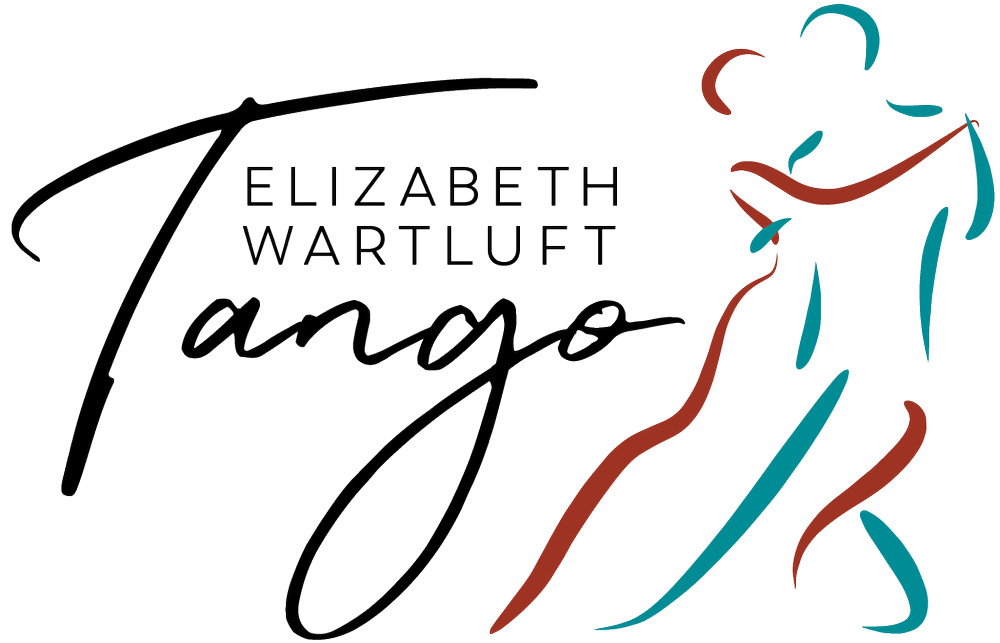At the beginning of all of my classes (except my beginner class), I ask my students what they would like to get out of the class. I then use that information to plan the class. C. asked for "weird, original moves" and "new ideas from normal places" to keep his followers from anticipating upcoming moves. R. asked to work on gaining precision "on everything." M. wanted "body placement and loose legs." G. wanted to do follower and leader sacadas--ah! something easy!!! As the rest of the class had not yet chosen goals, we started with the idea of sacadas, and quickly ended up at weird and original.
Basic Patterns
1. Leading the follower to do a front sacada through the leader's front cross.
2. Leading the follower to do a side step sacada through the leader's front cross.
3. Leading the follower to do a front sacada through the leader's back cross.
Focus: using these steps on the dance floor
Using Chicho's great cross-system grapevine exercises for moving around the room, we adapted it to the sacadas. This way, each sacada that happens moves the leader from the inside or outside track, to the other track around the room (think concentric circles). All three sacadas can be led with the leader starting with his/her back facing the center of the room, or facing out of the room, but ALWAYS continuing line of dance (LOD).
Weird and original: the variations
Once the basic patterns were working to some degree, we started messing around with my favorite question: what movements flow from this movement? what makes organic sense from this point?
1. (G's idea): adding a linear boleo immediately after the sacada is strange but fun. We worked on the quick timing needed for the leader to ground before the follower's leg goes past vertical, in order for a really nice, snappy linear boleo to happen.
Note: If you do this variation, the rebound wants to go reverse line of dance (RLOD), which can be dangerous. In order to stay with the feeling of progressing around the room, the rebound needs to be shaped into an overturned back cross and sent LOD.
1a. C. and G. liked the possibility of recurring front sacadas for the lead after this.
2. (C's idea): adding a volcada. This is much harder than 1., a bit weirder, but fun. The important factors are: you must use the sacada to get closer together, lift the follower slightly to make them stay on the same foot & not travel, and then guide them in the volcada & reground them. The only tricky part is convincing the follower to remain on the same foot!
Following tips:
It seems to me that many tango classes ignore the followers and focus on what the leader needs to do, and we didn't talk a lot about following in this session, BUT these crazy moves are a great place to work on your axis and using breath to balance/ground. Because you don't know what is going to happen next, you must be ready for anything, and that requires pinpoint accuracy in technique. M. found that, if she breathed and focused on staying on balance, all the moves became easier than when she tried to figure out what was happening ;-) More on following next week.
For those of you who didn't make it to class this week, don't worry: we're on to other, weird stuff!
